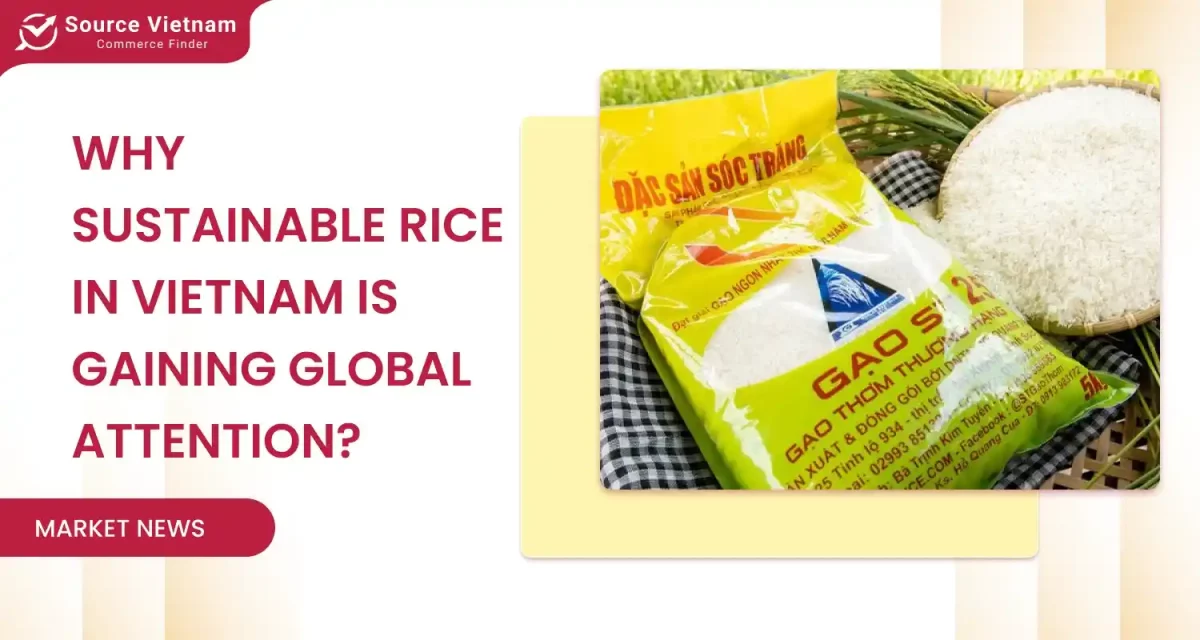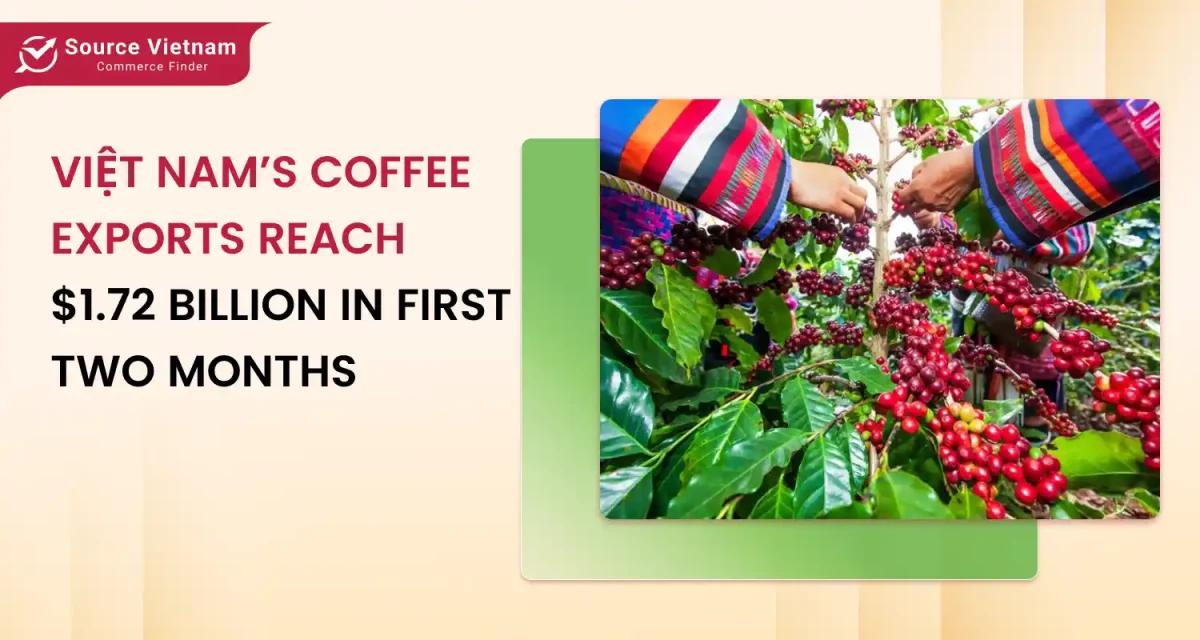Vietnam is among the world’s foremost producers and exporters of coffee. In 2024, however, the country’s coffee exports finally crossed $5 billion, marking a tremendous milestone that took almost a century to achieve. However, sustaining this growth in such a volatile market remains a great obstacle for businesses and the industry.
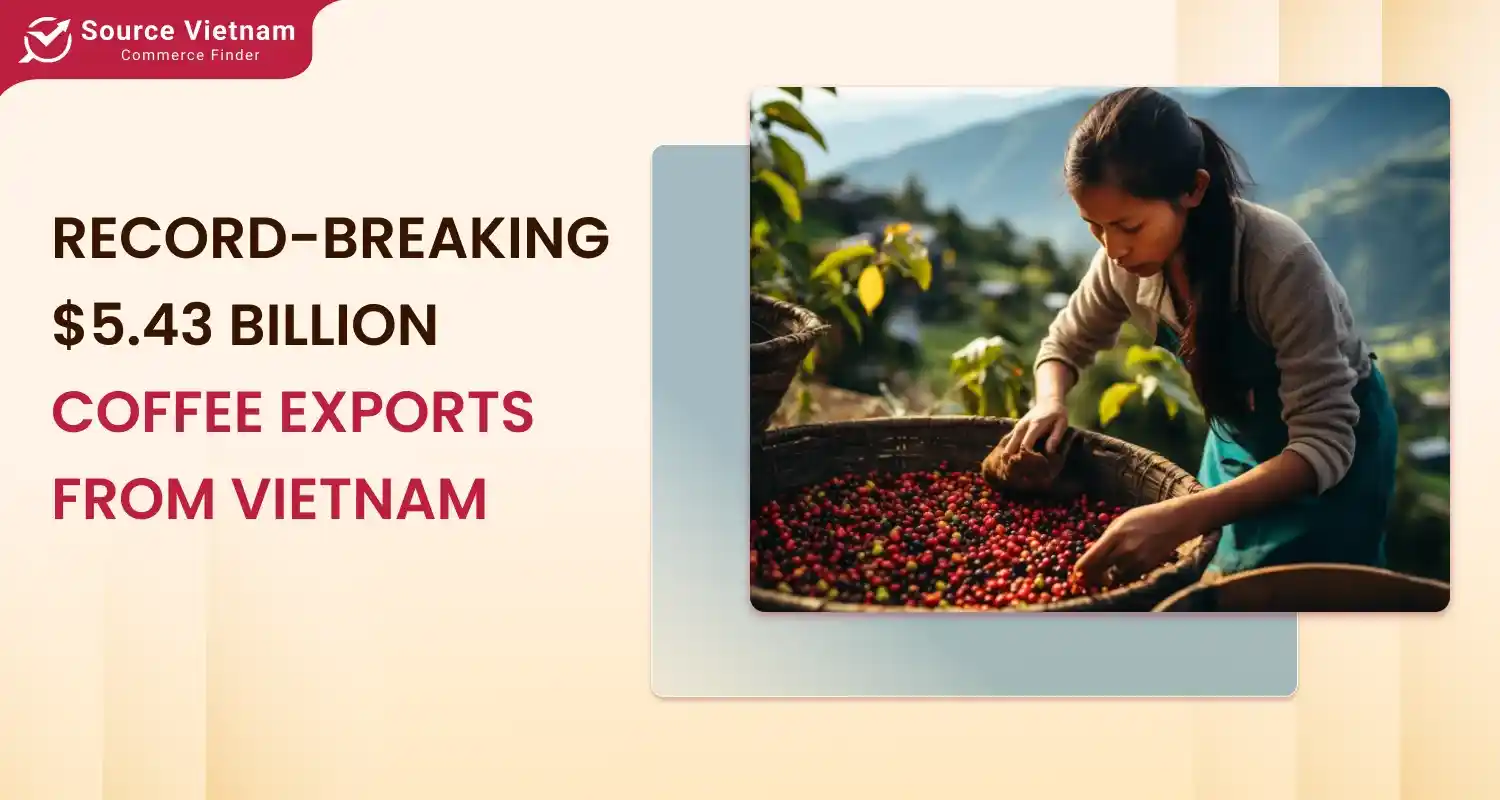
Growth driven by rising prices
Vietnam exported 1.45 million tons of coffee throughout the 2023-2024 season from October to September. This yielded an export revenue of almost $5.43 billion. The revenue saw a 33% increase, while the volume witnessed a 12.7% decline compared to the previous season. The annual report as of December 15, 2024, indicated an export value of $5.2 billion, ranking coffee as the third agricultural product of Vietnam to exceed $5 billion in revenue after fruits and rice.

Vietnam Coffee-Cocoa Association (Vicofa) Vice President Do Ha Nam explained that the growth was due to record price increases in the first half of 2024. Prices rose rapidly due to decreased output among the major coffee-producing nations. For the first time in history, Robusta coffee on the London exchange sold for over $5000 per ton and even exceeded the price of Arabica, which is traditionally more expensive. At home, coffee prices hit a 30-year peak and exceeded exports.
In the market season of 2023-2024, the average export price for coffee was $3,673 per ton, almost 50% higher than the previous year. This enabled coffee to become the fastest-growing agricultural export in price terms among Vietnam’s Ukrainian agricultural exports.
Key export markets
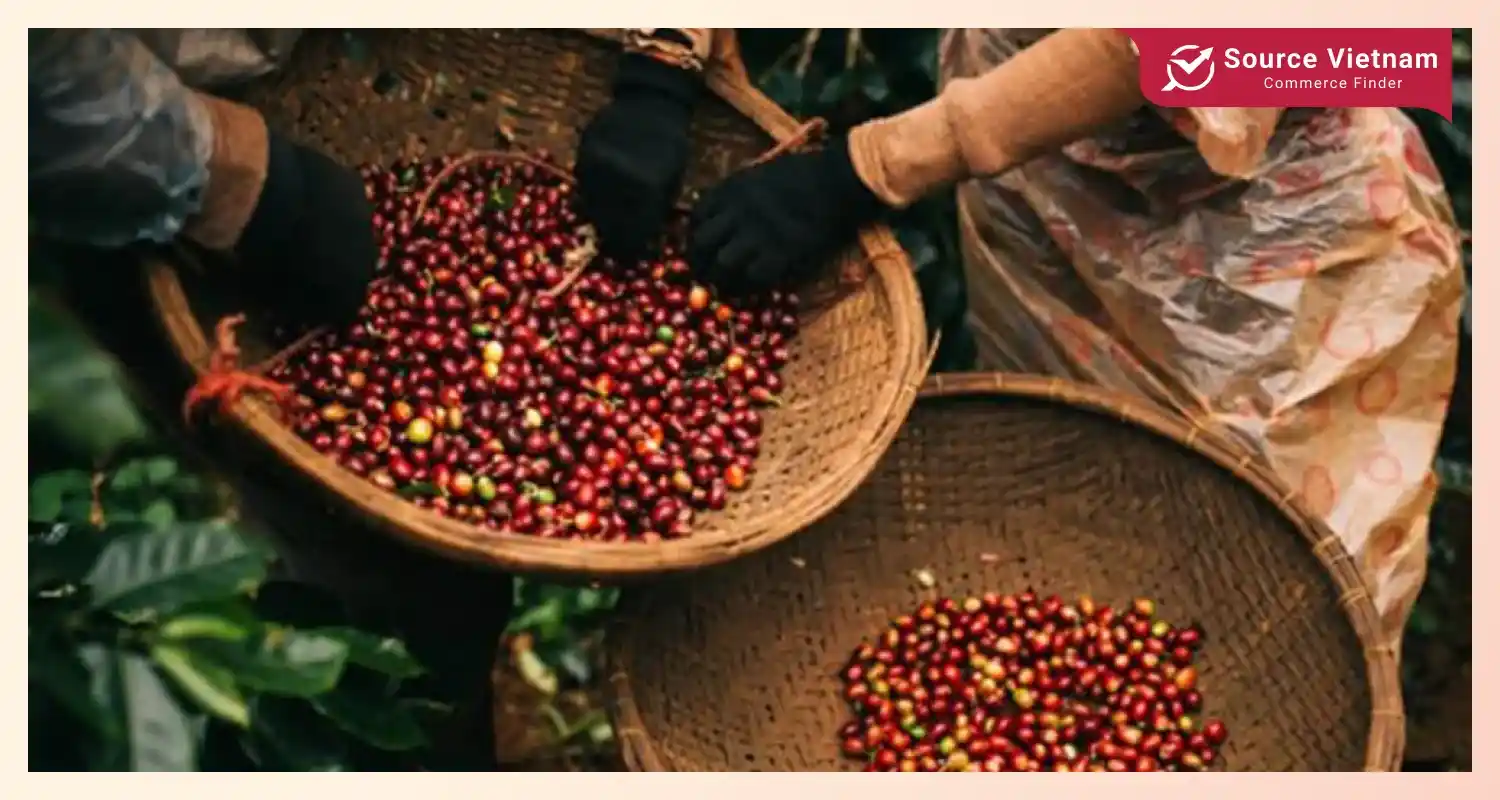
The European Union (EU) remained Vietnam’s largest coffee market. Vietnam exported 563,000 tons to the EU, valued at $2 billion. This represented an 8.6% drop in volume but a 41% increase in value compared to the previous season. The EU accounted for 38% of Vietnam’s coffee export volume and 37% of export revenue.
Challenges amid success
While coffee farmers enjoyed higher earnings, 2024 was a difficult year for coffee exporters and processors. Rapid price increases caused supply chain disruptions. Some suppliers canceled contracts, leading to supply chain breaks. Exporters often had to buy coffee at higher prices to fulfill orders initially agreed upon at lower prices. When prices rose, some buyers canceled contracts, resulting in mounting losses for exporters.
Supply chain issues also forced some of Vietnam’s traditional buyers, like Nestlé, to seek alternative sources from countries such as Brazil and India. This increased competition and reduced Vietnam’s market share. Importing coffee from other countries became necessary to ensure continuous operations at processing plants, further impacting Vietnam’s coffee industry.
What’s next for Vietnam’s coffee industry?
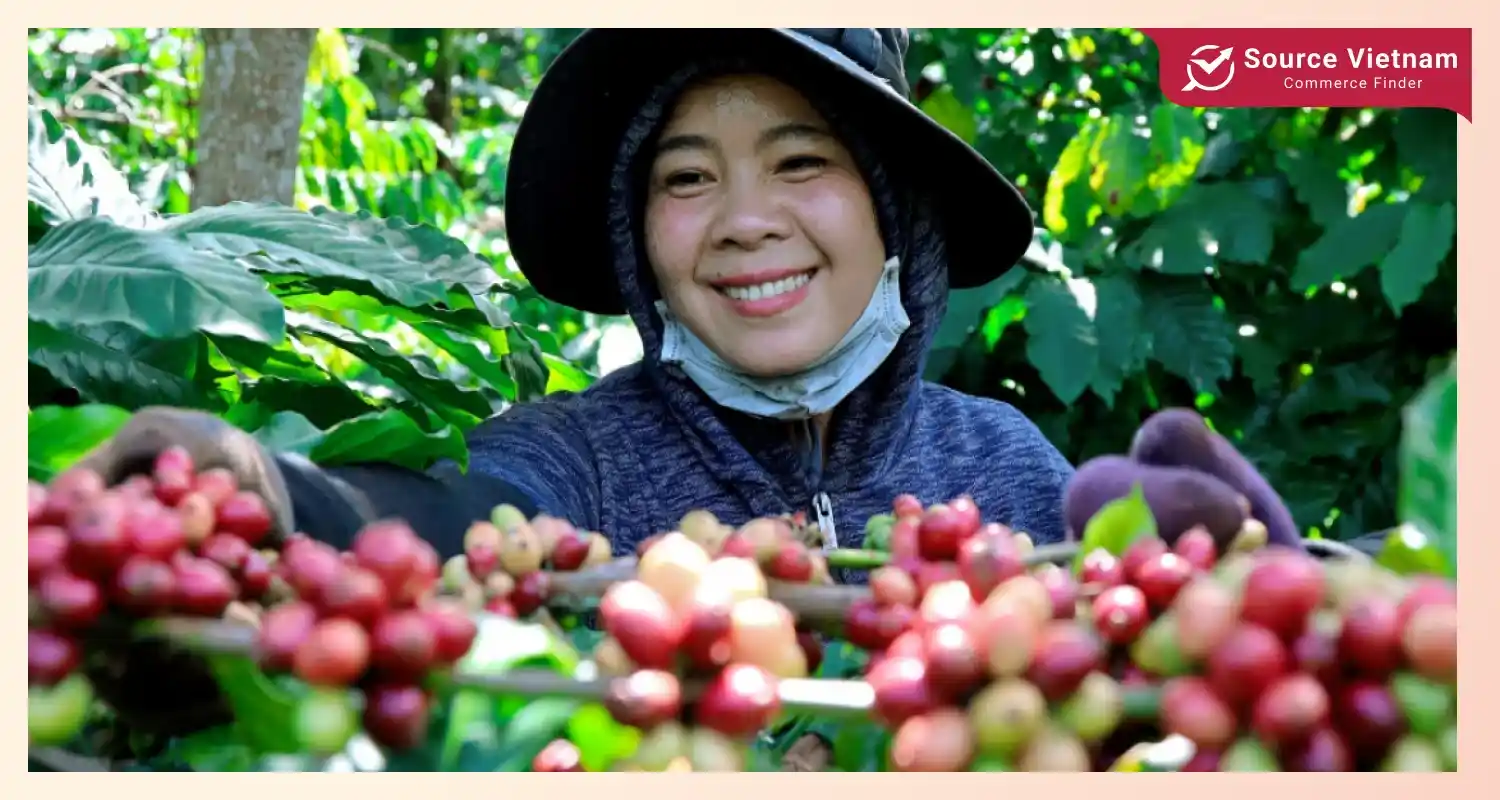
The U.S. Department of Agriculture (USDA) has projected that Brazil will produce approximately 69.9 million bags of coffee in the 2024-2025 growing season. This includes 48.2 million bags of Arabica and 21.7 million bags of Robusta. Meanwhile, Vietnam’s total production is expected to reach 29 million, comprised of 24.4 million bags exported and 4.6 million consumed domestically.
As for the forecast regarding Vietnam’s production of coffee in the future, many have predicted growth. Farmers have enjoyed high coffee prices in the past few years, incentivizing further investment in coffee farming. Coupled with this is the impact of the replanting scheme implemented by Vietnam’s Ministry of Agriculture and Rural Development and the World Bank (2014-2022). This has spurred productivity and output growth. Furthermore, while there is no specific data, new coffee plantations in Vietnam’s Central Highlands are rising.
Addressing supply chain issues
Mr. Nguyen Quang Binh, a coffee expert, has noted that the international and Vietnamese coffee markets will likely continue experiencing turbulence. To achieve growth oriented development, the Vietnam coffee sector must work on the supply chain issues and rebuild trust with export customers.
Farmers should work on enhancing the quality of the coffee produced instead of hastily increasing the area of cultivation, which might result in oversupply. On the other hand, the industry should invest in value-added processing and increased output to ensure sustained growth.
Building Vietnam’s coffee brand

The Phuc Sinh Company’s CEO, Phan Minh Thong, presented ways to improve coffee quality in Vietnam. He explained how, even in a major coffee producing country, Vietnamese coffee is considered cheap and inferior in quality compared to other countries.
Thong noted that global consumers increasingly prefer high-quality and specialty coffee. Vietnam must shift from focusing solely on raw coffee exports to producing unique, high-value coffee products. Specialty coffee can sell for $11 to $35 per kilogram, compared to $3 per kilogram for regular coffee. Leading companies in Vietnam are already investing in specialty coffee production, with positive market feedback.
Sustainability and global standards
Sustainability has since become a global practice as ESG environmental, social, and government criteria are now crucial for doing business in a given market, for example, the EU. In Vietnam, for instance, businesses must work with farmers in building international standard production and processing chains. This is essential to access markets and sustain Vietnam’s global coffee market competitiveness.
Conclusion
The milestone reached with Vietnam’s coffee exports is a profit for 2024. However, the goal is to maintain this growth, and Vietnam will have to overcome supply chain issues, improve product quality, and attain the sustainability goals set at a global level. With an emphasis on branding and high-value products in mind, the improvement prospects for Vietnam’s coffee industry are many: self-sustainable and profitably stable.

